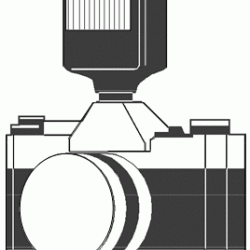Source Institutions
Source Institutions
Add to list Go to activity
Activity link broken? See if it's at the internet archive

Learners experiment with a commercial photo-sensitive paper (Sunprint® or NaturePrint® paper). They place opaque and clear objects on the paper and expose it to bright light, observing the results. Chemicals in the paper react when exposed to light. No reaction occurs where opaque objects are placed on the paper and block the light. The light reactions stop when you rinse the paper with water. Sunprint® paper can use sunlight or artificial light. Use this activity to introduce learners to the chemical processes to develop blueprints, photographs, and photocopier pages as well as the process of photosynthesis in nature.
- 30 to 45 minutes
- Under 5 minutes
- $5 - $10 per group of students
- Ages 6 - adult
- Activity
- English
Quick Guide
Materials List (per group of students)
- One small, stable desk lamp with flexible gooseneck
- Assortment of small objects ¼ to 1½ inch in length (10-15 items total): metal, plastic, and glass, e.g., paper clips, keys, buttons, or washers. Include at least one transparent glass or plastic object.
- One small plastic beaker
- One small metal box (Band-Aid® box works well)
- One piece of white place mat
- One piece of thin cardboard
- Centimeter ruler (general storage)
- Clock with a second hand (general storage)
- One 60-watt halogen bulb with fitting that matches lamp at right (keep two on hand)
- Dark blue or black heavy duty tape
- Sun-sensitive paper — use either:
- SunPrint® paper produced by Lawrence Hall of Science, University of California, Berkeley, CA 94720, (510) 642-1016. Package contains 24 sheets, 20 cm by 30 cm (keep three packages on hand)
- —OR— NaturePrint® Paper, P.O. Box 314, Moraga, CA 94556. Package contains 15 sheets, 19 cm by 14 cm (keep four packages on hand)
Subjects
-
Engineering and Technology
-
Engineering
- Chemical Engineering
-
Engineering
-
Life Sciences
-
Diversity of Life
- Plants
-
Diversity of Life
-
Physical Sciences
-
Chemistry
- Chemical Reactions
- Chemistry of Life
-
Vibration and Waves
- Light and Optics
-
Light and Optics
- Sunlight and Color
-
Chemistry
Informal Categories
- Outdoor Activity
- Nature and Environment
- Photography and Film/Video
- Toys
Audience
To use this activity, learners need to:
- see
- see color
- touch
Learning styles supported:
- Involves hands-on or lab activities
Other
Components that are part of this resource:
This resource is part of:
Access Rights:
- Free access
By:
Rights:
- All rights reserved, Oregon Museum of Science and Industry, 1997
Funding Source:
- National Science Foundation
